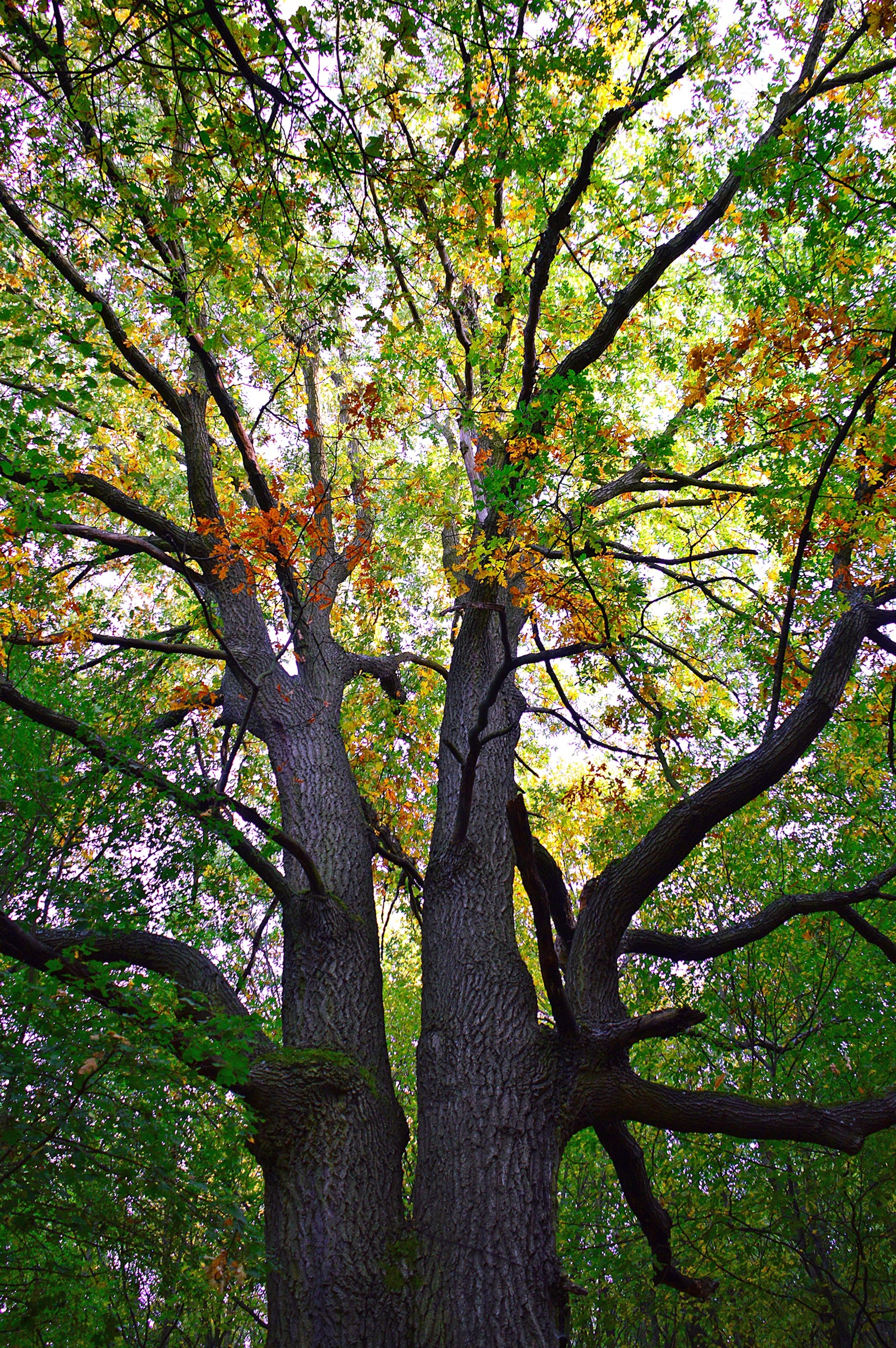How We Garden Affects the Forest Preserves
Over the past few months, Egermann Woods, Herrick Lake Forest Preserve and Churchill Woods, among others, have gotten quite a facelift.
Their entire understory seems to have disappeared. Alarmed, some have wondered why the dense foliage has been removed, leaving the forest floor bare. Perhaps an even more interesting question is, how do our gardening and landscaping choices tie into the actions recently undertaken in the preserves?
As it happens, rather directly.
What we have witnessed over the past few months is largely the removal of invasive plant species from our natural areas. Invasives are nonnative plants that cause harm, whether to human and/or wildlife health, the environment generally, or the economy. These include plants as small as the biennial garlic mustard to midsized shrubs like honeysuckle and the towering Callery (Bradford) pear tree.
A walk of our Green Trails neighborhood provides many opportunities to see these invasive plants, both within and outside of people’s gardens. Honeysuckle (especially Lonicera maackii), burning bush (Euonymus alatus), Japanese barberry (Berberis thunbergia) and Callery pear (Pyrus calleryana) are among the top contenders, although other invasives also exist.
Some of these are used as privacy screens, others are volunteer plants that were never removed, still others were purchased as ornamentals before we knew their impact.
And the impact is significant. It costs the state of Illinois millions every year to manage invasive species in the preserves. Invasives outcompete native plants (whether in our woodlands, prairies or wetlands), leading to biodiversity loss. Invasive plants also affect human health. For instance, studies now show that specific invasive plants, such as Japanese barberry and nonnative honeysuckle, serve as key hosts for ticks and pathogens.
So what can we do? We can begin by identifying the invasive plants that are on our properties and have them removed. Removal is integral as birds eat the seeds and, through their feces, carry them to other locations (like the forest preserves) where the seeds become a new “thicket” or “patch” of invasive plants. Second, we can stop purchasing plants that are known invasives and seek alternatives in our gardens and landscapes. The Resources provides some links to suggested alternatives. Finally, we can offer a few hours a year to volunteer with the DuPage County Forest Preserve’s Department of Natural Resources. They are always looking for people to help cut down buckthorn, honeysuckle and other invasive plants.
Our choices have impacts well beyond the garden or landscape we tend.
Resources
Allan, Brian F. et al. 2010. “Invasive honeysuckle eradication reduces tick-borne disease risk by altering host dynamics.” Proceedings of the National Academy of Sciences (PNAS). Vol. 107, No. 43. Available at: https://www.pnas.org/doi/10.1073/pnas.1008362107
Chicago Region Trees Initiative. No Date. “Healthy Habitat Series” (see especially the “Healthy Hedges” plant replacement section). Available at: https://chicagorti.org/program/healthy-habitat-series/#healthy-hedges.
Forest Preserve District of DuPage County. No Date. “Terrestrial Invasives.” Available at: https://www.dupageforest.org/plants-wildlife/invasives/terrestrial#buckthorn.
Invasive Species Advisory Committee. 2019. “The interface between invasive species and the increased incidence of tickborne diseases, and the implications for federal land managers.” Available at: https://www.doi.gov/sites/doi.gov/files/uploads/tick-borne_disease_white_paper.pdf.
Midwest Invasive Plants Network. No Date. “Landscape Alternatives for Invasive Trees, Shrubs, and Vines of the Great Lakes Region.” Available at: https://bugwoodcloud.org/mura/mipn/assets/File/LA%20Brochure_WEB_FINAL.pdf. (Note that MIPN also offers a free app. that identifies invasives and offers plant alternatives. It’s called Landscape Alternatives by Charles T. Bargeron).

